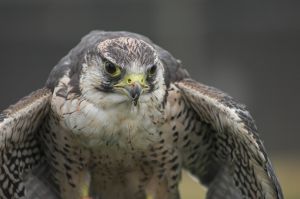Golden Eagle
At one time, the Golden Eagle lived in temperate Europe, North Asia, North America, North Africa and Japan. In most areas this bird is now a mountain-dweller, but in former centuries it also breeds in the plains and the forest. In recent years it has started to breed in lowland areas again (Sweden, Denmark).
There was a great decline in Central Europe and the Golden Eagle is now restricted to the higher central Apennine regions of Italy (the regional capital of Abruzzi is named after the Latin/Italian word for eagle, L’Aquila), and the Alps. In Britain, there are about 420 pairs left in the Scottish highlands, and between 1969 and 2004 and they bred in the English Lake District. In North America the situation is not as dramatic, but there has still been a noticeable decline.
Efforts are being made to re-introduce the species in Glenveagh National Park, County Donegal, Ireland, where they had been extinct since the early 20th Century. Forty-six birds have been released into the wild from 2001 to 2006, with at least three known female fatalities since then. It is intended to release a total of sixty birds, to ensure a viable population. More..
Breeding
Inhabits high moorland, mountains and remote islands where there are plenty of open areas to feed over. They tend to avoid places with large areas of forestry.
Wintering
They have similar to breeding habitats.
Where to see it
It lives in the wild, open moorlands and mountains of Scotland, favoring islands and remote glens. Best looked for soaring high over hillsides in the Scottish Highlands. The few English eagles can be looked for at the RSPB’s Haweswater reserve and watch point in Cumbria.
What does it eat?
With Birds and mammals – there’s some carrion.
What does it sound like?
Occasional yelping calls
When to see it
People can see it year round. Look for displaying birds, with their looping and plunging flights, on fine days in winter and early spring.


What an Awesome bird. I love these nature pictures http://www.forestwander.com
Golden Eagle. All skies for you
once, we had some birds come to our school, the golden eagle dropped its waste on the floor. :P it was pretty funny, but i know that these birds are majestic. :)
The Golden eagle is one of the best accepted birds of casualty in the Northern Hemisphere. Like all eagles, it belongs to the ancestors Accipitridae. Once boundless beyond the Holarctic, it has abolished from abounding of the added heavily busy areas. Despite getting extirpated from some its above ambit or uncommon, the breed is still adequately ubiquitous, getting present in Eurasia, North America, and locations of Africa.
Coin Jewelry